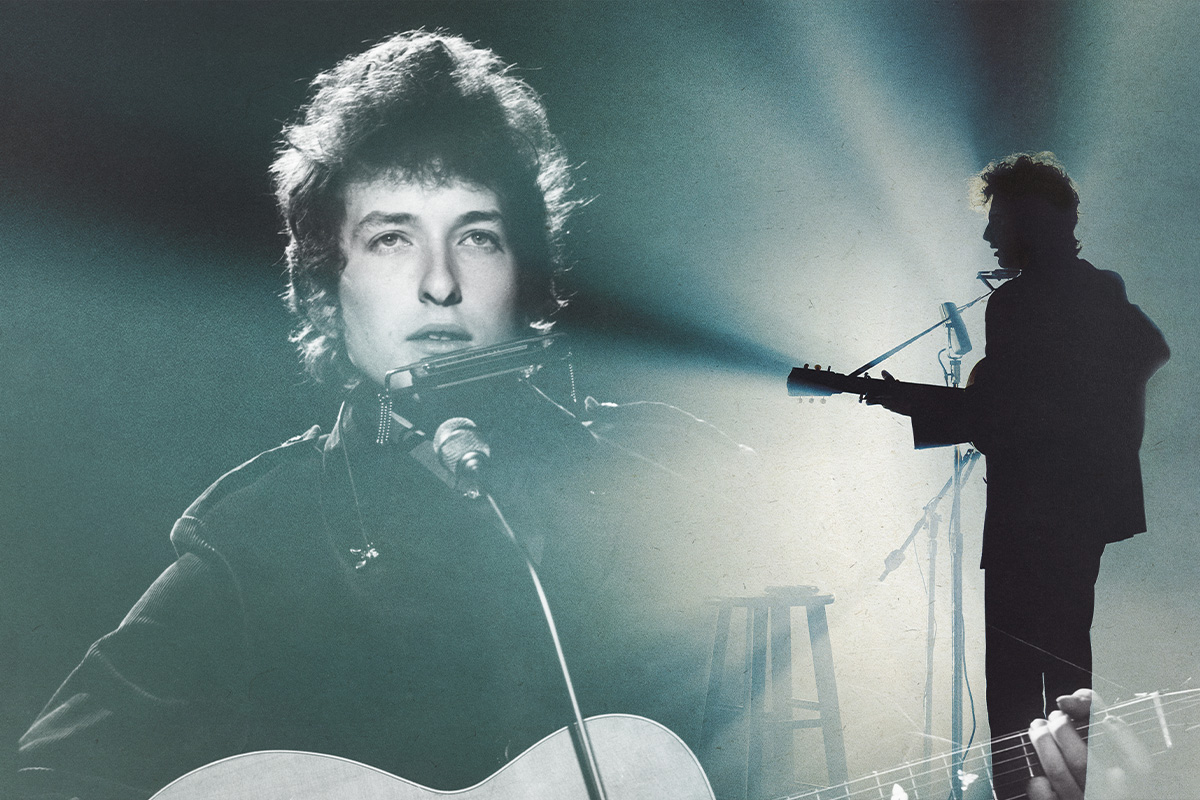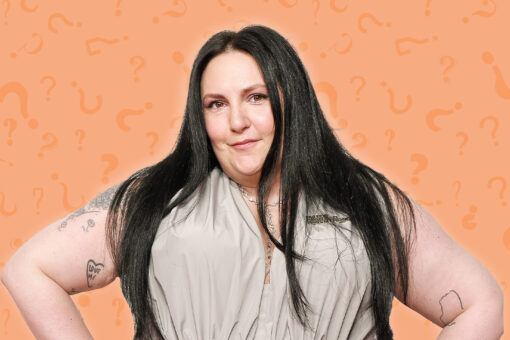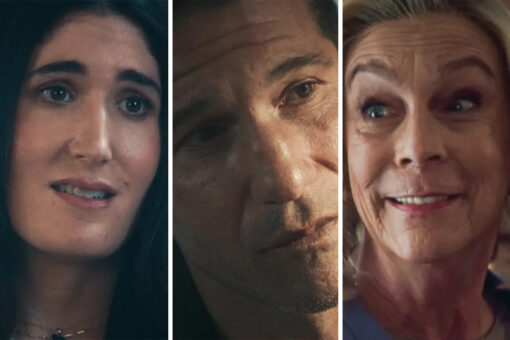Editorial note: Light spoilers ahead for “A Complete Unknown.”
“A Complete Unknown,” the Bob Dylan biopic starring Timothée Chalamet, takes the position that the legendary folk rock musician is just that: completely unknowable. The film begins in 1961 as 20-year-old Bob Dylan arrives in New York City almost out of thin air. During his quick ascent to musical stardom, Bob — and thus the movie — reveal little about his past. Only a postman delivering a package reveals that Dylan’s actual last name is Zimmerman. When one character glances through the package’s contents, a scrapbook, the audience sees that Bob came from Minnesota and a piece of paper with Hebrew lettering on it reveals that young Bob had a bar mitzvah.
The intrusion into Bob Dylan’s private life is quickly quashed though. Bob’s girlfriend Sylvie Russo (Elle Fanning), an allusion to Bob’s real-life girlfriend Suze Rotolo, claps the scrapbook shut. That’s that. The rest of “A Complete Unknown” is more interested in the battle between Bob and his inclination to “go electric” and artists like Pete Seeger who are dedicated to the American folk revival movement.
But this moment in the film points ever-so-slightly in the direction of Bob Dylan’s publicized and confusing journey with religion. All of which begs to question: So, is he Jewish? And if not, what religion is Bob Dylan?
Let’s dive in.
Early years: 1941 to early 1960s
In the beginning, Bob Dylan was Jewish. He was born Robert Allen Zimmerman on May 24, 1941 to parents Abram Zimmerman and Beatrice “Beatty” Zimmerman (née Stone) in Duluth, Minnesota. On his father’s side, his family emigrated to the United States from Odessa, Ukraine, formerly of the Russian Empire, escaping from antisemitic pogroms in 1905. His maternal grandparents were Lithuanian Jews who came to the United States in 1902. Upon birth, Bob was given the Hebrew name Shabtai Zissel ben Avraham.
The family moved to Hibbing, Minnesota when Bob was 6 years old, and Judaism played an important role in his upbringing. Abram was president of Hibbing’s B’nai B’rith lodge for a time, and Beatty was president of the branch of Hadassah. Meanwhile, Bob spent summers at the Jewish Herzl Camp in Wisconsin and went to Hebrew school at Orthodox synagogue Agudath Achim. Later in life, Abram told Bob Dylan biographer Robert Sheldon that Bob was extremely proficient in Hebrew. “He knew 400 Hebrew words — literally… He was the only one who could speak Hebrew like they do in Israel today,” Abram said of their congregation.
On May 22, 1954, Bob Dylan became a bar mitzvah. In 1985, he spoke publicly about his experience saying:
“The town didn’t have a rabbi, and it was time for me to be bar mitzvahed. Suddenly a rabbi [Reuben Maier] showed up under strange circumstances for only a year. He and his wife got off the bus in the middle of winter. He showed up just in time for me to learn this stuff. He was an old man from Brooklyn who had a white beard and wore a black hat and black clothes. They put him upstairs above the cafe, which was the local hangout. It was a rock-and-roll cafe where I used to hang out, too. I used to go up there every day to learn the stuff, either after school or after dinner. After studying with him an hour or so, I’d come down and boogie.”
Following the service, Bob had what seems to have been a blow-out bar mitzvah party at the Androy Hotel in Hibbing. There were over 400 guests invited. Flash forward a few years and Bob attended college at the University of Minnesota for the 1959-1960 school year. During that time, he pledged the Jewish fraternity Alpha Sigma Mu and briefly lived in the fraternity house.
Though this period of his life is undoubtedly Jewish, later, Bob Dylan would reveal that his interest in Christianity started early. In a 2015 interview with AARP Magazine, Bob claimed that he attended a few Billy Graham rallies in the ’50s and ’60s. Graham was an influential Christian evangelist and Southern Baptist minister. “When I was growing up, Billy Graham was very popular. He was the greatest preacher and evangelist of my time — that guy could save souls and did,” Bob said. “This guy was like rock ’n’ roll personified — volatile, explosive. He had the hair, the tone, the elocution — when he spoke, he brought the storm down. Clouds parted. Souls got saved, sometimes 30- or 40,000 of them.”
Reaching stardom: 1960s and 1970s
In 1961, Bob moved to New York City to pursue being a musician. He started going by Bob Dylan, and quickly became successful. His debut album, entitled “Bob Dylan,” released on March 19, 1962, and his second album “The Freewheelin’ Bob Dylan,” came out in May 1963. Throughout this time, as with the rest of his career, Bob was extremely private about his personal life. Still, Jewish references have broken through in his music since the beginning.
In 1962, Bob recorded a track called “Talkin’ Hava Negeilah Blues,” a folksy version of the Jewish folk song “Hava Nagila.” The track became an outtake and wasn’t released until 1991 on “The Bootleg Series Volumes 1-3 (Rare And Unreleased) 1961-1991.” He begins the track by claiming that he learned this “foreign song” in Utah, but it’s more likely that he learned it while growing up in the Jewish community in Minnesota.
Some other extremely Jewish lyrics include a reference to the Holocaust in the 1964 song “With God On Our Side:” “When the Second World War / Came to an end / We forgave the Germans / And we were friends / Though they murdered six million / In the ovens they fried / The Germans now too / Have God on their side;” an allusion to the Binding of Isaac in the opening verse of 1965’s “Highway 61 Revisited”: “Oh, God said to Abraham, ‘Kill me a son!’ / Abe says, ‘Man, you must be puttin’ me on;'” and the words of the priestly blessing inserted into “Forever Young” from 1973.
Then, in 1975, Bob attended a congregational seder for Passover at Temple Israel in Hollywood. Highlights of the seder assuredly must have been when Bob played “Blowin’ In the Wind” and Marlon Brando crashed the event. Rabbi Haskell Bernat told JTA at the time that Bob, Marlon and another notable guest Dennis Banks “had contributed to the sense of justice and social awareness of the American people.”
Christian phase: Late 1970s
Thus begins the height of what people refer to as Bob Dylan’s Christian phase. In 1978, a fan in San Diego threw a silver cross onstage during one of Bob Dylan’s shows and he kept it. Then, a few days later, Bob reports to have had a vision of Jesus Christ in a hotel room in Tuscon, Arizona. The Independent reports that Bob said he felt “a presence in the room that couldn’t have been anybody but Jesus.” “Jesus put his hand on me,” he explained, “It was a physical thing. I felt it. I felt it all over me. I felt my whole body tremble. The glory of the Lord knocked me down and picked me up.” Per the Independent, Bob then studied Christianity for three months [at the Vineyard School of Discipleship in Reseda, California] “and was reportedly baptized, though proof is scant.” According to Salon, Bob Dylan’s turn to Christianity was also inspired by a born-again Christian woman he was seeing at the time. “The depth of her commitment to Christ inspired a similar quest in him,” writer Aaron Carnes offered in 2017.
Either way, Bob then went on to write and record three albums which reflect his new-found Christian faith. These include “Slow Train Coming” (1979), “Saved” (1980) and “Shot of Love” (1981). When touring for these albums, Bob would share his religious beliefs onstage. “There’s only two kinds of people — there’s saved people and there’s lost people. Jesus is the lord. Every knee shall bow to him,” he said onstage in Tempe, Arizona in 1979. “I’m telling you now Jesus is coming back, and He is! And there is no other way of salvation… Jesus is coming back to set up His kingdom in Jerusalem for a thousand years,” he said in Albuquerque, New Mexico the same year.
Back to Judaism: 1980s
However, at some point in the 1980s, Bob Dylan returned to his Jewish roots. In 1983, Bob was present and wearing a kippah, tallit and tefillin at the Western Wall in Jerusalem for the bar mitzvah of his eldest son, Jesse. (For what it’s worth, Bob also sent his children to Herzl Camp in Wisconsin and his sons Jesse and Jakob have both spoken publicly about identifying as Jewish.) The same year, he released the song “Neighborhood Bully” on his album “Infidels,” which defends Israel’s existence.
In 1984, in an interview with Rolling Stone, Bob rejected the label of born again Christian though he didn’t quite clarify how he identified religiously. He said he believed literally in the Bible and thought that the Hebrew Bible and the New Testament are equally valid. “I’ve always thought there’s a superior power, that this is not the real world and that there’s a world to come. That no soul has died, every soul is alive, either in holiness or in flames. And there’s probably a lot of middle ground,” he explained. When interviewer Kurt Loder asked if he belonged to any church or synagogue, he responded, “Not really. Uh, the Church of the Poison Mind [laughs].”
Regardless, after his son’s bar mitzvah, Bob began studying with Chabad rabbis in Flatbush, Brooklyn. In 1989, Bob Dylan appeared with his son-in-law Peter Himmelman and Harry Dean Stanton on a Chabad telethon, where they performed “Hava Nagila.” As you can see, Bob dons a kippah while playing the harmonica.
Later career: 1990s to now
From then on, Bob has shown a proclivity towards both Judaism and Christianity, and provided numerous mysterious statements on his religiosity. In 1997, he told Newsweek, “Here’s the thing with me and the religious thing… I find the religiosity and philosophy in the music.” In 2001 he offered, “I’ve had a God-given sense of destiny. This is what I was put on earth to do.” And in 2022 he said, “I’m a religious person.” He went on, “I read the scriptures a lot, meditate and pray, light candles in church. I believe in damnation and salvation, as well as predestination. The Five Books of Moses, Pauline Epistles, Invocation of the Saints, all of it.”
Throughout the 1990s, 2000s, 2010s and perhaps earlier and even before, Bob has been reported to have attended synagogues incognito. A 2016 article from The Forward relays a story from 1990-1991 of Bob Dylan attending Ne’ilah services at a Chabad shul in California, where he was asked to open the ark for the Torah service. In 2007, JWeekly reported that Bob attended Yom Kippur services at Congregation Beth Tefilliah, an Orthodox congregation affiliated with Chabad near Atlanta, where he was honored with the sixth aaliyah. The article also states that he was spotted at Yom Kippur services in Minnesota in the ’90s, and at a Chabad synagogue in Oyster Bay, N.Y. for the High Holidays in 2005. Bob was also spotted at a Los Angeles synagogue in 2011 following the death of his first girlfriend Suze Rotolo.
At the same time, Bob’s 2020 album “Rough and Rowdy Ways” contains songs with Christian religious imagery. For example, “My Own Version of You” references the apostles John and Peter, Saint Jerome and Judgment Day, while in “I’ve Made Up My Mind to Give Myself to You” he sings, “If I had the wings of a snow white dove / I’d preach the gospel, the gospel of love.” (Though in “I Contain Multitudes,” Bob also sings that he’s “just like Anne Frank.”)
So what does this all mean? What religion is Bob Dylan?!
Verdict: Scott Marshall, author of “Bob Dylan: A Spiritual Life,” provides a fairly convincing answer: “It’s tough to ignore the impact of Dylan’s Jewish roots and the impact that Jesus has had on Dylan — they’re both a part of his story,” he told Billboard in 2017. He continued:
“Christianity can mean different things to different people; for Dylan, it seems it’s more about the figure of Jesus than the following of an organized religion. Dylan’s own Jewish roots cannot be denied, whether it’s the revolutionary figure of Jesus in the first century or Dylan’s childhood in Minnesota in the 1940s and 1950s, or his naturally slipping into synagogues as an adult. Dylan appears to be a child of God, not tethered to any religion for religion’s sake, but trying to pursue the Truth, clay feet and all.”



